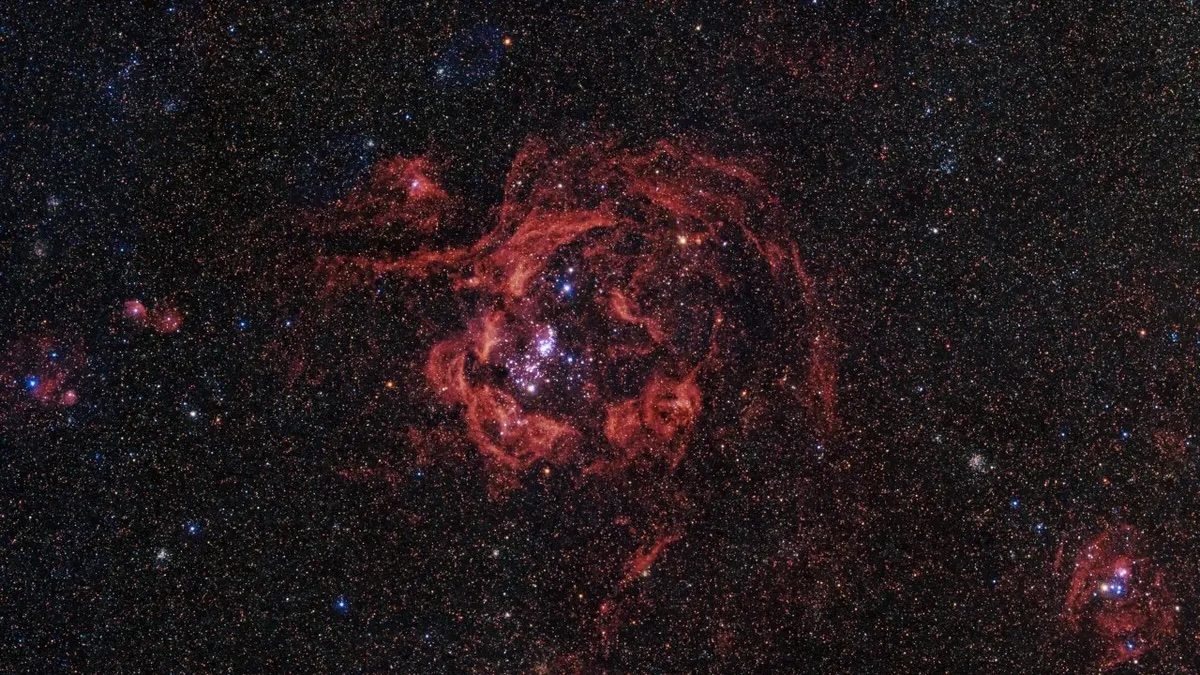The Andromeda Galaxy glows rosy red in gorgeous new Hubble Telescope image
The Andromeda Galaxy, the Milky Way's closest galactic neighbor, glows brightly in a new Hubble Space Telescope image with swathes of ionized gas that fuel star formation.

The rosy red structures of a nearby galaxy glow brightly in a new image from the Hubble Space Telescope.
The Andromeda Galaxy — the Milky Way's closest galactic neighbor — is located about 2.5 million light-years away. Measuring approximately 152,000 light-years across, it has nearly the same mass as our Milky Way galaxy. A recent hubble image, released on Aug. 30, captures a detailed view of the northeast region of the famed galaxy, including its intricately woven spiral arms and swathes of ionized gas that fuel star formation.
Related: Space photo of the week: The 1st image of an alien planet
"The combination of stellar nurseries and supernovas create a dynamic environment that excites the surrounding hydrogen gas, flourishing it into a garden of star-studded roses," NASA officials said in a statement.
Using Hubble's Advanced Camera for Surveys and Wide Field Camera 3, researchers were able to peer through the clouds of gas and hone in on Andromeda's spiral arms to analyze the galaxy's vast collection of stars.
"The extent of the study spanned a vast range of stars, providing not just a clear view of Andromeda's stellar history and diversity, but also more insight on stellar formation and evolution overall," NASA officials said in the statement.
"By examining these stars in our local cosmic neighborhood, scientists can better understand those within galaxies in the distant universe."
Sign up for the Live Science daily newsletter now
Get the world’s most fascinating discoveries delivered straight to your inbox.
Andromeda is believed to be falling toward the Milky Way due to gravitational forces between the two galaxies and the invisible dark matter that surrounds them both. Ultimately, the two galaxies are expected to experience a head-on collision in about 2 billion to 4 billion years, which will drastically alter the structure of both Andromeda and the Milky Way as we know them today. However, some new research casts doubt on this collision theory — so, perhaps only time will tell.
Originally posted on Space.com.










